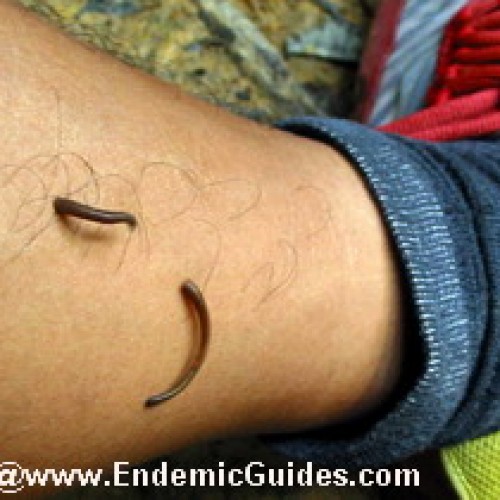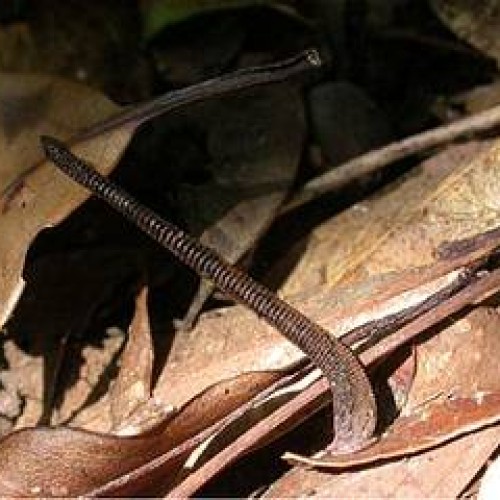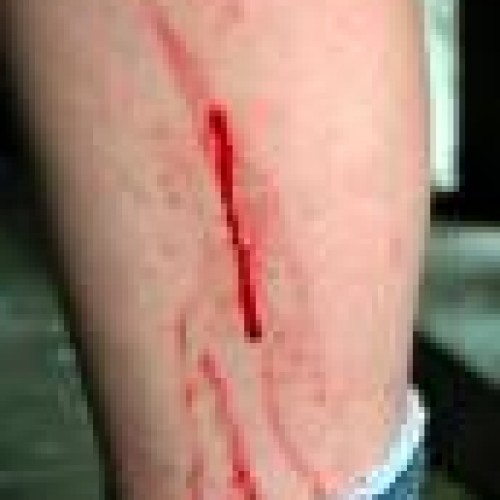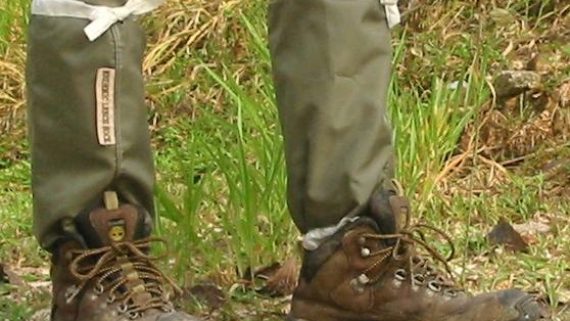The Blood Sucker, Leech
The Blood Sucker, Leech, in Tropical Rainforest, Borneo, Malaysia
One of the little issues of trekking in the rainforest, is really those pesky little leeches. In Malaysia, generally there are three types; the dark brown ground based common leech, the green-reddish-with-yellow-streaks-sticking-under-the-leaf-type (Tiger Leech), and the Kinabalu Giant red leech (found in Borneo).
The leeches in the rainforest are particularly “vicious” and really blood-thirsty. As you make your way in the wet rainforest trail, you will realise and learn how just how blood-thirsty they are. There are leeches just about everywhere, somersaulting and quivering in all direction. Leeches have heat-seeking sensors that are pretty perked up and sensitive to human body heat. If you are standing still to take a breather, you would find at least two or three leeches somersaulting up your pants, or dropping themselves from the overhanging leaves (sound scary).
Leeches will crawl into places of maximum warmth before biting. The ankles are the most common places for bites since the leeches generally are quite low when you pick them up, and they can also bite through the loose weave sock material. Leeches are inchworm-sized creatures that stay on low lying bushes and the forest floor waiting for unsuspecting warm blooded creatures to pass by. They then latch on for a meal of blood, letting go when they are fully engorged.
What is a Leech?
There are two types of leeches – neither of which is poisonous or carry disease. You cannot feel when brown leeches bite as they inject a kind of anesthetic when they attach. The tiger leech has a small bite that you can feel. Both inject an anti-coagulant, so the blood continues to flow for some time after the leech drops off. Unlike the old wives tale, you can pull leeches off in mid-feed in a panic, although it is easier to nonchalantly roll it around until it lets go, and then flick it off.
Leeches are responsive to light and mechanical stimuli. First, they can detect movement. So if you brush against a tree and tread heavily they will feel, rather than hear, you coming. Secondly, they can detect you by your body temperature. They have heat receptors. Leeches easily dry out and go into a torpid state if they do. But add water and they will rapidly spring into action.
Leeches are clitellate when breeding and are derived from some oligochaete ancestor. They attach to their hosts and remain there until they become full, at which point they fall off to digest. Leeches’ bodies are composed of 34 segments. They all have a ventral sucker formed from the last six segments of their body, which is used to connect to a host for feeding. They use a combination of mucus and suction (caused by concentric muscles in those six segments) to stay attached.
To counter this problem.
If you find a leech attached to your body the first thing to do is don’t panic! The only thing a leech does is steal a tiny bit of your blood, look revolting and make a bit of a bloody mess. You can simply wait till it drops off, thereby avoiding touching the slimy thing. After all, once it is attached it makes no difference when you remove it. You can just physically pull it off but then it may leave its mouthparts embedded in the skin potentially leading to infection. (Although this can happen anyway.) Lastly, you can resort to chemical means – anything that the leech won’t like such as vinegar, lemon juice, salt or tiger balm (a type of ointment).
Over the years and after many bites some people develop a bit of a reaction to leech bites and the itching can drive you crazy. Also, the potential for infection should not be underestimated; this can be a real problem in the tropics especially as most bites will occur around the ankle area where shoes and socks tend to rub. Leech proof socks are the best way of denying access to your bare skin. (Most leeches can easily tunnel through the weave of your socks.)
Leeches (Land Leeches) are found only in the Indian subcontinent, Southeast Asia( Malaysia, Thailand, Indonesia, Papua New Guinea,Vietnam, Cambodia, Laos Borneo, etc), Wallace (group of Indonesian islands separated by deep water from the Asian and Australian continental shelves), Australia (North Australia near Queensland rainforest and down south in Victoria), Melanesia (Those small Island near Papua, Indonesia and north Australia) , Madagascar, India and the Seychelles.
The best answer to landed leeches problem is to wear anti-leech-socks: A self-made sock of tightly woven and stitched cotton or other fabric would do if the sock is long enough to get to just under your knees and held by a strap. Leeches will almost always try to find the shortest way to a place that is body-warm and therefore get trapped between your leech sock and your boot. If they are really a pest you can improve this by a ring of insect repellent around your leech proof socks just above the place were they might enter your boot. Of course, the socks won’t make you 100% immune to the problem as the leeches will also climb on to you from overhanging vegetation and can attack you around the waist or the neck as well, but this extra protection will get rid most of the leech from the ground.





